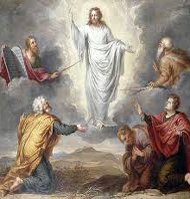La Transfiguración. Del Señor 10% Para @Heartchurch//The Transfiguration. From the Lord 10% to @Heartchurch
Reciban un cordial Saludo de mi parte y a su vez desearles que tenga un Feliz día a todas las personas que hacen vida en esta comunidad, en esta oportunidad le escribo para traer la buena nueva que Dios nos tiene a cada uno de nosotros el día de hoy, como lo es ver nuevamente la brillantes del sol y permitirnos nuevamente tener un día más de experiencia en esta agitada vida.
Segundo domingo de Cuaresma, es el de la transfiguración del Señor. Todos necesitamos, de vez en cuando, subir al monte Tabor y encontrarnos con la gloria de Cristo. Solo allí encontraremos la fuerza para volver a bajar al valle y hacer frente a los problemas de cada día. Subir al Tabor para estar con Cristo significa dedicar momentos a la oración, al retiro espiritual, a profundizar en la amistad con Cristo.
Es verdad que no podemos quedarnos perpetuamente instalados en la cima de la montaña, que eso es algo momentáneo, que después debemos regresar a la vida cotidiana; pero también es verdad que necesitamos ver la meta de nuestro caminar, aunque sea momentáneamente y de una manera imperfecta y parcial. Solo así no desfalleceremos en nuestro caminar.
La palabra “transfiguración” proviene de las raíces latinas trans (“a través”) y figura (“forma, aspecto”). Por lo tanto, significa un cambio de forma o apariencia. Esto es lo que le sucedió a Jesús en el evento conocido como la Transfiguración: su apariencia cambió y se volvió gloriosa. La Transfiguración ocurrió en presencia de los apóstoles Juan, Pedro y Santiago, los tres discípulos principales.
El hecho de que Jesús solo permitió que tres de sus discípulos presenciaran el evento pudo haber provocado la discusión que rápidamente se produjo sobre cuál de los discípulos fue el más grande (Lucas 9:46).
La experiencia de la Transfiguración está destinada a señalar los sufrimientos que Jesús está a punto de experimentar. Está destinado a fortalecer la fe de los discípulos, revelándoles la mano divina que está trabajando en los eventos que Jesús sufrirá.

Imagen De Dominio Publico Fuente
Receive a cordial greeting from me and in turn wish you a happy day to all the people who make life in this community, this time I am writing to bring the good news that God has for each of us today , as it is to see the brightness of the sun again and allow ourselves to have another day of experience in this hectic life.
Second Sunday of Lent, is that of the transfiguration of the Lord. We all need, from time to time, to climb Mount Tabor and encounter the glory of Christ. Only there will we find the strength to go back down into the valley and face the problems of each day. Going up to Tabor to be with Christ means dedicating moments to prayer, to spiritual retreat, to deepening our friendship with Christ.
It is true that we cannot remain perpetually installed on the top of the mountain, that this is something momentary, that later we must return to daily life; but it is also true that we need to see the goal of our journey, even if it is momentarily and in an imperfect and partial way. Only then will we not faint in our walk.
The word “transfiguration” comes from the Latin roots trans (“through”) and figura (“shape, aspect”). Therefore, it means a change in form or appearance. This is what happened to Jesus in the event known as the Transfiguration: his appearance changed and he became glorious. The Transfiguration occurred in the presence of the apostles John, Peter and James, the three main disciples.
The fact that Jesus only allowed three of his disciples to witness the event may have sparked the discussion that quickly ensued over which of the disciples was the greatest (Luke 9:46). The Transfiguration experience is meant to point to the sufferings that Jesus is about to experience. It is meant to strengthen the faith of the disciples, revealing to them the divine hand that is working in the events that Jesus will suffer.
